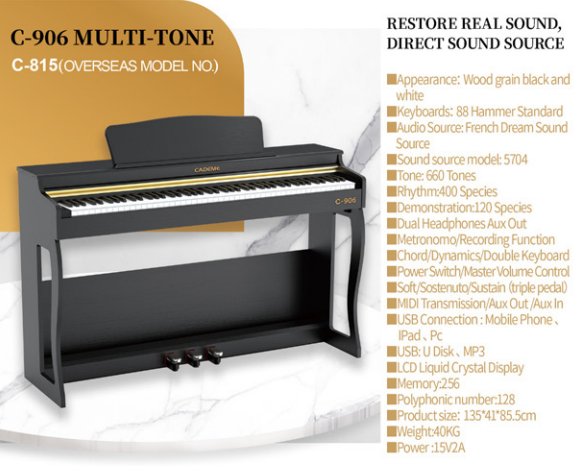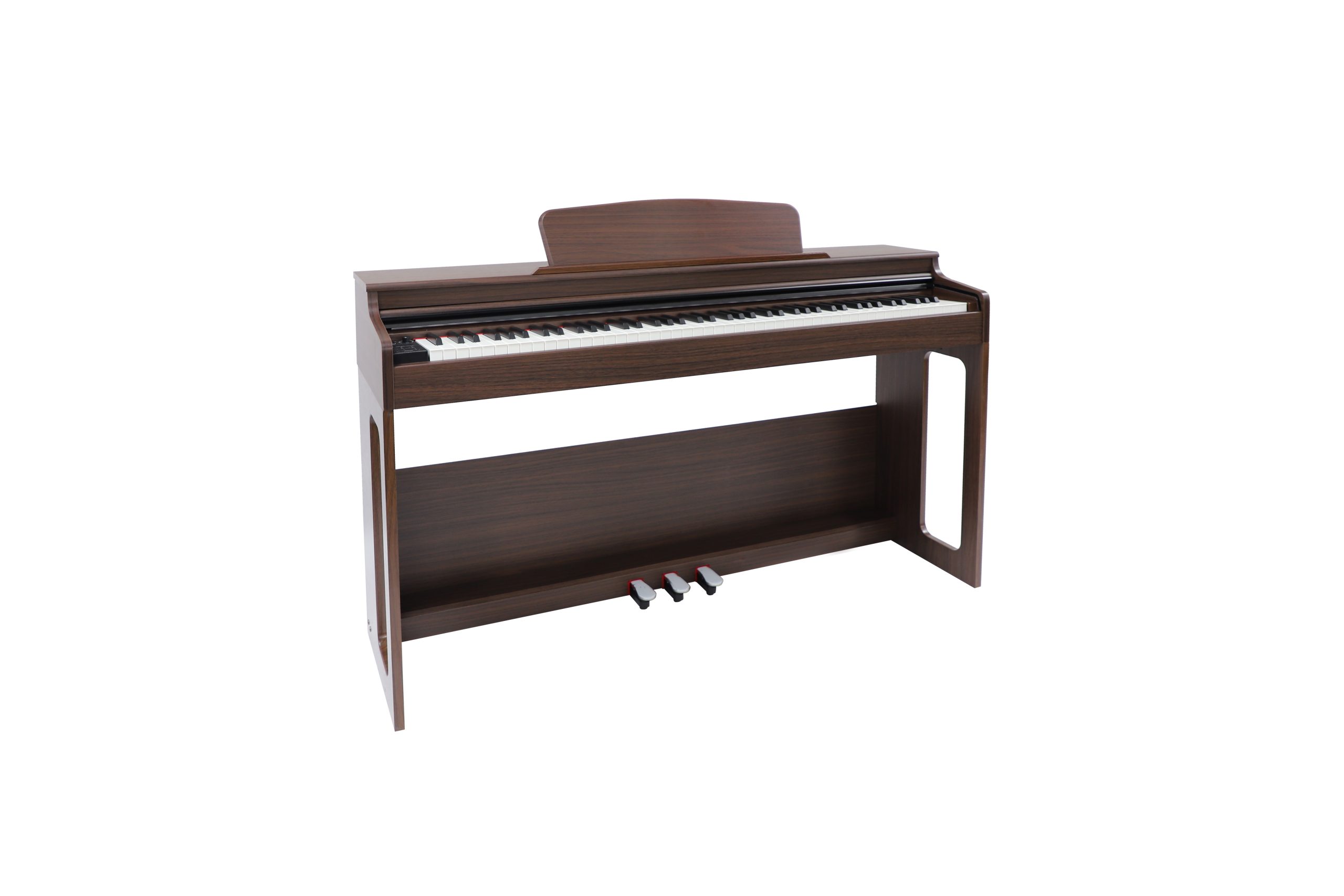Why Digital Pianos Are Ideal for Homes
In modern households, space efficiency is crucial. A digital piano offers a compact alternative to traditional acoustic pianos without compromising on sound quality or functionality. Families, especially those with children, can benefit significantly from owning a digital piano as it serves as both a musical learning tool and an entertainment source.
Unlike acoustic pianos, digital pianos are lightweight, portable, and do not require frequent tuning. This makes them a low-maintenance yet high-performance musical instrument that fits seamlessly into any living space.
How Digital Pianos Save Space
One of the biggest advantages of digital pianos is their sleek and compact design. Unlike bulky acoustic pianos, which require dedicated floor space, digital pianos can be placed against a wall, in a corner, or even stored away when not in use.
- Slim Profiles: Many digital pianos feature a streamlined, minimalist build that allows them to fit into tight spaces.
- Foldable & Portable Options: Some models are designed to be folded and stored under a bed or inside a closet.
- Wall-Mountable Variants: High-end digital pianos can even be mounted on walls, making them a fantastic space-saving solution.
For apartment dwellers or families with limited space, these features make digital pianos a practical yet sophisticated choice.
Perfect for Families with Children
A Great Introduction to Music
A digital piano is an excellent tool for early music education. Learning to play an instrument from a young age helps develop cognitive skills, hand-eye coordination, and creativity. Digital pianos make this process even more engaging for children with features such as:
- Built-in Learning Modes: Many models come with guided tutorials, interactive lessons, and light-up keys to help beginners learn at their own pace.
- Adjustable Sound Settings: Children can experiment with different tones, instrument voices, and effects, making the learning process more enjoyable.
- Recording and Playback Functions: These allow children to listen to their progress and identify areas for improvement.
A Quieter and More Family-Friendly Option
Traditional acoustic pianos can be loud, making practice sessions disruptive, especially in shared living spaces. Digital pianos offer adjustable volume control and headphone compatibility, allowing children to practice without disturbing others.
Additionally, digital pianos have weighted keys that replicate the feel of acoustic pianos, ensuring that children can transition to traditional pianos effortlessly if they wish to pursue advanced training.
Key Features That Make Digital Pianos Stand Out
1. Advanced Sound Technology
Modern digital pianos utilize high-quality sound sampling and advanced speaker systems to replicate the rich tones of grand pianos. With stereo sound output, users can enjoy an immersive musical experience without the need for external speakers.
2. Smart Connectivity Options
Digital pianos come with USB, Bluetooth, and MIDI connectivity, allowing users to:
- Connect to learning apps and online tutorials.
- Record and edit music using digital audio workstations (DAWs).
- Play along with backing tracks and metronomes for rhythm improvement.
3. Customization and Versatility
Unlike acoustic pianos, digital pianos offer extensive customization options, including:
- Hundreds of instrument sounds, from grand pianos to electric keyboards.
- Built-in rhythm and accompaniment features to enhance practice sessions.
- Layering and split-keyboard modes for advanced musical creativity.
4. Durability and Low Maintenance
Acoustic pianos require frequent tuning and are sensitive to temperature and humidity. Digital pianos, on the other hand, are built for long-term use with minimal maintenance needs. Their sturdy construction ensures they last for years, making them a cost-effective investment for families.
How to Choose the Right Digital Piano for Your Home
When selecting a digital piano, consider the following factors:
1. Keyboard Action and Touch Sensitivity
For a realistic playing experience, choose a model with weighted keys or hammer action technology to mimic the feel of an acoustic piano.
2. Sound Quality and Polyphony
Higher polyphony (the number of notes a digital piano can produce simultaneously) ensures richer and more expressive sound quality. Look for models with at least 64-note polyphony for a better playing experience.
3. Portability vs. Standalone Models
- If you need a portable option, consider a compact, lightweight keyboard with a detachable stand.
- For a permanent setup, opt for a console-style digital piano that blends well with your home decor.
4. Learning Features for Beginners
If you’re buying for a child or beginner, choose a piano with interactive lessons, light-up keys, and recording features for better engagement and learning progress.
Why Digital Pianos Are the Future of Home Music Learning
With the rise of digital learning platforms and smart technology, digital pianos are becoming an essential household item. Their ability to integrate with apps, provide guided lessons, and offer silent practice makes them the perfect musical companion for modern families.
Whether you’re introducing music to a child or looking for a space-efficient instrument for your home, a digital piano is an investment in creativity, learning, and entertainment.







